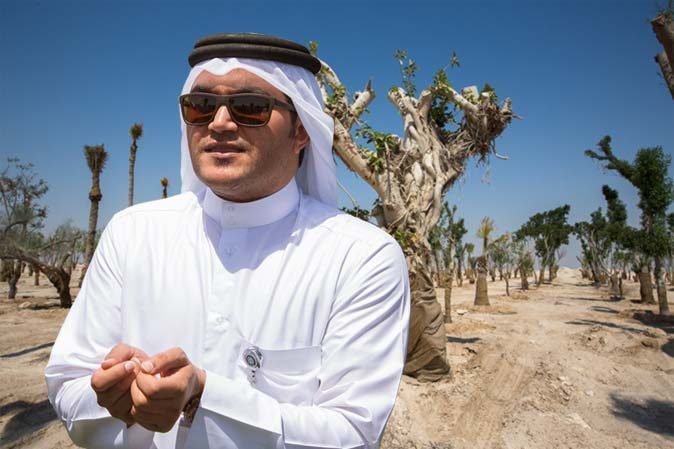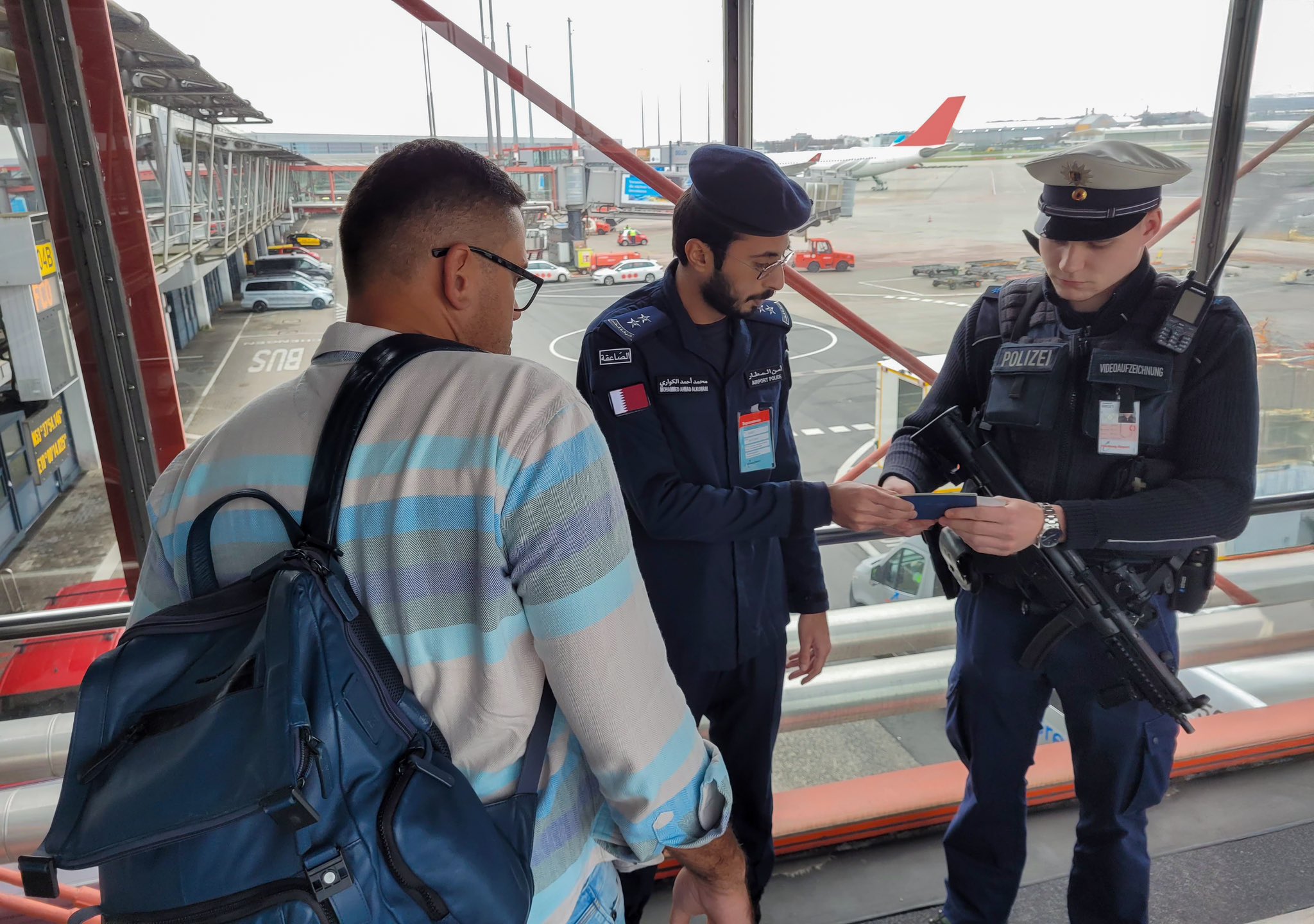
An empty tract of desert north of Doha is being transformed into a tree and turf nursery to grow greenery that will surround Qatar’s World Cup stadiums.
The nursery has been created on an 880,000 sq meter site by Umm Slal Ali, next to the recently launched Doha North Sewage Treatment Works.
It is also adjacent to a budding manmade forest.

In the coming years, the World Cup nursery aims to grow some 16,000 trees of 60 different species.
Thousands of shrubs are also being cultivated to landscape the complexes around the upcoming stadiums.
Additionally, the nursery will grow and harvest swathes of grass equivalent in size to around 168 football pitches each year. These will be used by contractors on the precincts of the World Cup sites.
And in a bid to be as sustainable as possible, the nursery will be irrigated using recycled water that was recovered and treated at the nearby sewage plant, Qatar’s local World Cup organizing committee said.
Transplanted trees
The nursery launched in June this year, and is divided into three sections dedicated to growing trees, shrubs and grass.
So far, it is home to around 300 trees that have been carefully transplanted from various construction sites across the country.
By 2022, it should host some 3,000 transplanted trees, the Supreme Committee for Delivery and Legacy (SCDL) said in a statement.

The nursery should also have thousands of other trees which will be grown from seedlings on a dedicated 30,000 square meter area.
Species will include the native and symbolic sidra tree, as well as ficus and acacia.
All trees will be tagged with information about their origin, name and life cycle, said Yasser Al Mulla, senior manager of landscape and sport turf management at the SCDL.
To protect the growing trees from the harsh desert elements, the nursery will be surrounded by other trees that act as windbreakers, the SCDL added.

The trees will be grown in the nursery for between two and five years. They will then be carefully transplanted to their new locations in the complexes that surround the football stadiums.
Horticulture experts will be on hand to properly advise contractors on how to care for the trees to ensure they survive the move.
Al Mulla continued:
“Trees are very delicate and they can live many years. To protect them and make sure a transplant is successful they must be relocated in a place where they receive sunlight always from the same direction.
The roots must be cut carefully in a one-meter diameter and always keeping soil in the roots. For transportation the tree has to be well wrapped and trimmed before it is replanted.”
Growing grass
The nursery will also have a section for growing grass that will eventually be replanted around the stadium sites.

Al Mulla said around 440,000 square meters of turf will be harvested three times a year.
This equates to around 1.2 million square meters of grass annually – or around 168 football pitches of grass a year.
In addition to using treated water from the nearby sewage plant, the nursery will also have two 18,000 square meter lagoons. These should hold enough water for three days’ worth of irrigation, the SCDL added.
The complex is one of a number of sites being used by World Cup organizers to grow grass and plants.

Earlier this year, the organization shared more details about its research facility near the Aspire Zone in western Doha. It is being used to grow and test different types of grass.
The most resilient, highest-performing and best-looking turf will be used on the stadium pitches for the World Cup matches.
Thoughts?







